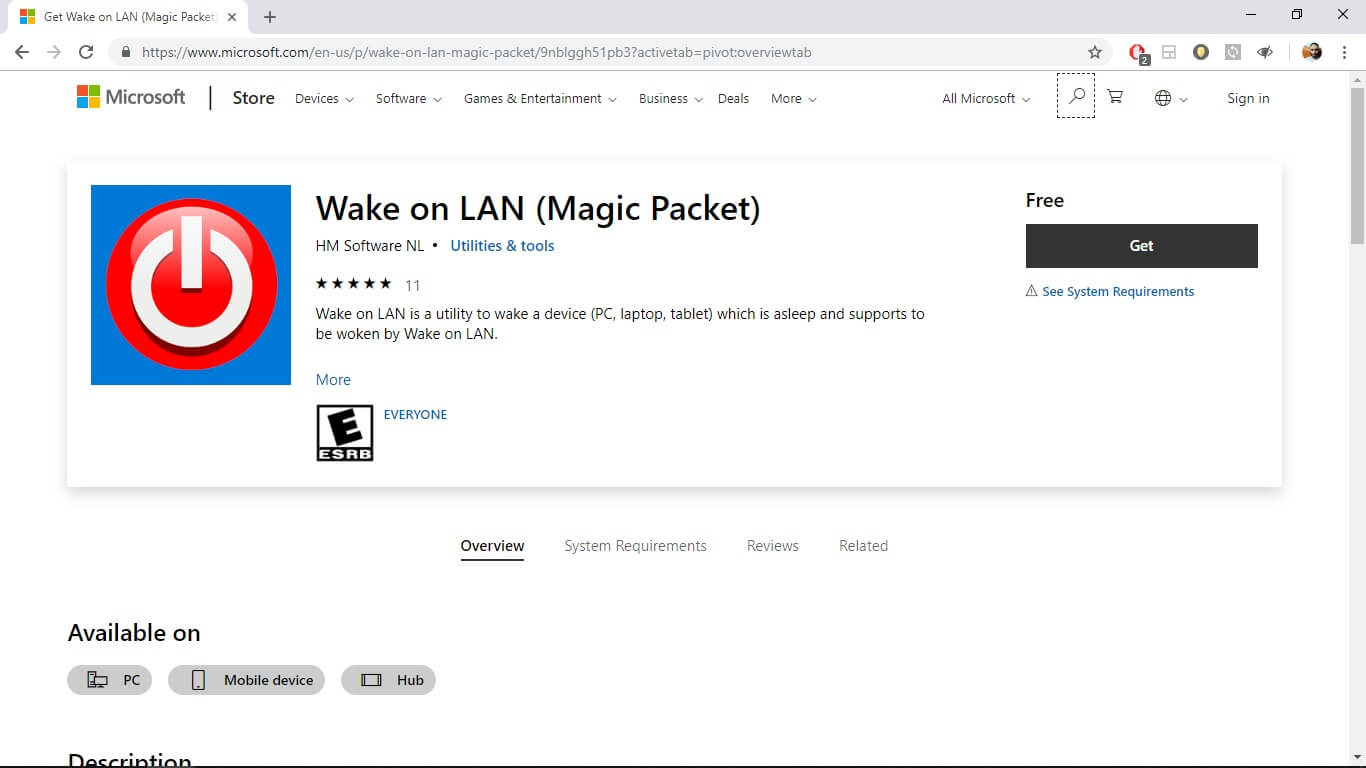
Vendors frequently add new features to the WoL and WoWLAN standards to offer protocol-transparent on-demand services, such as the Apple Bonjour wake-on-demand (Sleep Proxy) capability.Ī specially created packet known as a magic packet is used to implement wake-on-LAN (or "WOL"), and it is transmitted to all computers in a network, including the one that needs to be awakened. A second standard known as Wake on Wireless LAN (WLAN) must be used if the computer that needs to be awakened is communicating via Wi-Fi. Other terms are interchangeable, including wake on WAN, remote wake-up, power on by LAN, power up by LAN, resume by LAN, resume on LAN, and wake up on LAN.

By utilizing subnet-directed broadcasts or a WoL gateway service, it is also possible to start the message from a different network. Wake-on-LAN (WoL or WOL) is an Ethernet or Token Ring computer networking protocol that enables a machine to be turned on or awakened by a network message.Īn application running on a device connected to the same local area network often sends the message to the target machine.
#Wake up lan port how to

Depending on the complexity of your network, in some cases, WoL magic packets are filtered between different subnets, or when the packets attempt to pass through specific networking hardware. This allows you to test the routing and addressing aspects of WoL to ensure the magic packets are reaching a given remote device. Use WoLMonitor to watch for WoL packets that are issued from the target computer using WoLGUI.
#Wake up lan port download
Download the attached free tools, WOLMonitor and WolGUI, to test WoL functionality if you have problems waking devices on your network.Allow Magic packets (port UDP 9) through the router, if needed.Only allow management stations to bring the computer out of standby.Allow this device to bring the computer out of standby/wake the computer.Allow the computer to turn off this device to save power.The following options must be selected for the network card in Device Manager: Depending on device make and model, some devices require extra configuration in BIOS setup or in some cases cannot be woken from individual sleep states.Verify that the network card supports this technology.Verify that the magic packets reach the target computer:.This article provides the steps to address these issues. This means that due to hardware issues, the computer may be waking up from the 'fully-off state', but doesn't wake from sleep or hibernation or vice-versa. In some cases, hardware may wake from one low power state but not from others. This is because it requires appropriate BIOS, network card and, sometimes, operating system and router support to function reliably. Wake-on-LAN can be a frustrating technology to implement but easy to troubleshoot.


 0 kommentar(er)
0 kommentar(er)
